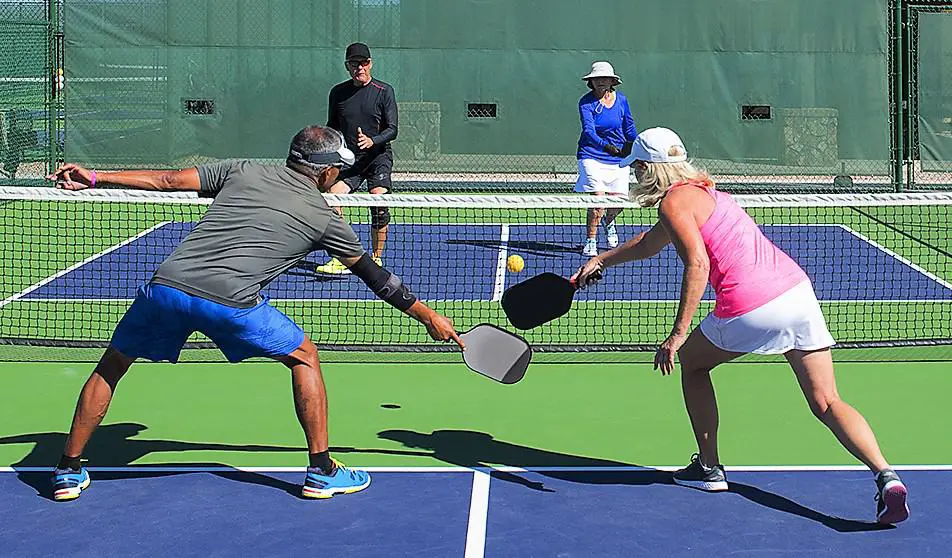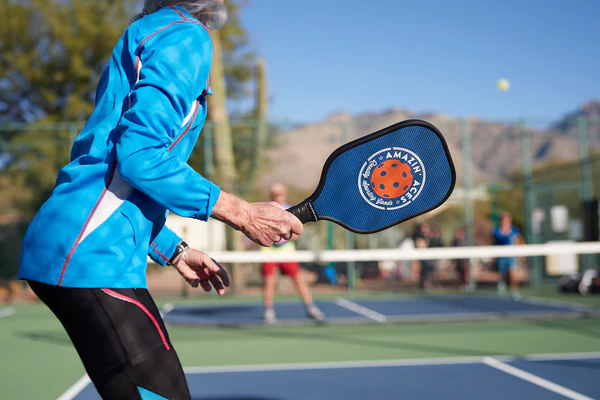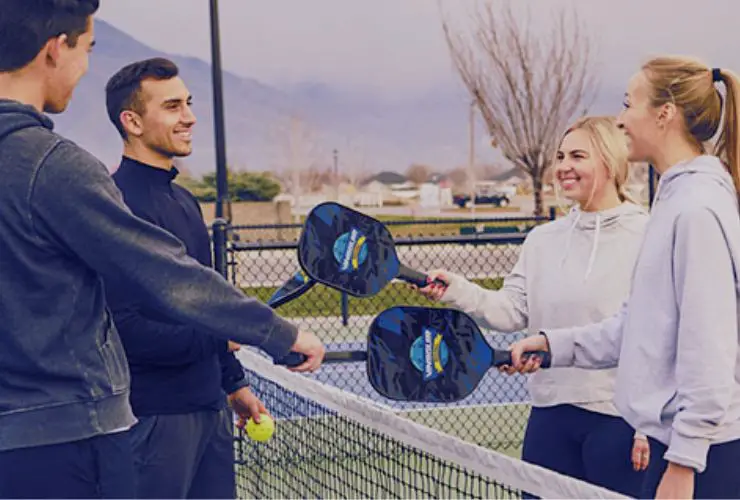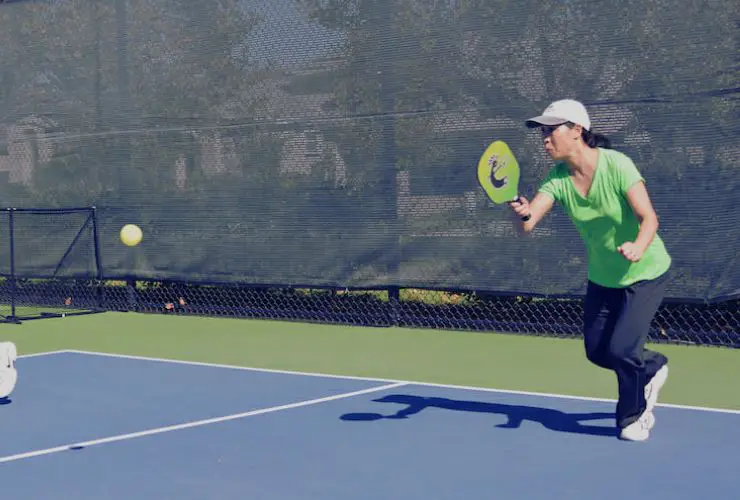Rally Scoring In Pickleball? (What Is with PROS and CONS)
Rally Scoring is used in the sport of Pickleball. It is a point-scoring system in which points are only awarded when the serving team wins the rally. This system is used in both singles and doubles play.
The main advantage of Rally Scoring is that it is a very fair way to score points. Every player on the court has an equal opportunity to score points. This system also speeds up the game and makes it more exciting to play.
What Is Rally Scoring In Pickleball?
Rally scoring in Pickleball is a point system in which any team winning a rally is awarded a point. This system is used in doubles play and is designed to keep the game moving quickly and evenly.
How Do You Do Rally Scoring?
Rally scoring is a way of scoring points in a tennis match. The basic premise is that whichever team wins the rally wins the point. If the serving team wins the point, the players alternate serves until they lose a rally/point.

There are a few variations of rally scoring, but the most common one is playing to four points. This means that the first team to win four points wins the game. To win a point, the serving team must win two consecutive rallies.
If the receiving team wins a rally, they score a point and get to serve. The main advantage of rally scoring is that it is much faster than traditional scoring.
How Do You Score A Point In Pickleball?
To score a point in pickleball, the ball must be hit over the net and into the opponent’s court. It can be hit off the ground or off a bounce, but it cannot be carried or thrown. The player must also have one foot on the ground when hitting the ball. If the ball hits the ground in bounds and then goes out of bounds, it is still in play. The game is played to 11 points, with players serving alternately. To win a point, a player must have a two-point lead.
How many points do you play a game to when rally scoring?
In rally scoring, the game is played to 21 points. The points are awarded as follows:
- If the serving team wins the rally, they score a point.
- If the receiving team wins the rally, they score a point.
- If the serving squad wins the rally and the receiving team commits a fault, the serving team scores two points.
If the receiving squad wins the rally and the serving team commits a fault, the receiving team scores two points. The first team wins the game to reach 21 points.
When the receiving team wins a rally they pickleball.
When the receiving team wins a rally in Pickleball, they are awarded a point and the right to serve. If the score is tied at 0-0, the receiving team that wins the rally will receive the point.
This is known as the “serve-to-win” rule and is used to keep the game moving. The rule ensures that there is always a winner and loser in each rally and that the server always has something to play for.
Pros and Cons of Rally Score in Pickleball:
Pros:
The main benefit of rally scoring is that it makes the games go by faster. This can be advantageous because it means that the duration of games is more consistent and predictable. Additionally, rally scoring is more accessible for players to keep track of.
Additionally, rally scoring can sometimes lead to longer games if the score goes back and forth. Whether or not to use rally scoring is up to the individual pickleball players or teams.

Cons:
When discussing the pros and cons of rally scoring in Pickleball, it’s essential to consider the impact of this scoring on the game. Rally scoring can be a great way to keep the game moving and keep players engaged, but it can also be risky.
One of the most significant risks associated with rally scoring is encouraging players to take more risks. This can lead to more mistakes and more points being given away.
Additionally, rally scoring can pressure players to perform at a higher level, which can be challenging to sustain throughout a long game.
Frequently Asked Question
What does fault mean in Pickleball?
Fault in Pickleball refers to a mistake made by the serving team that results in the server’s loss of serve or side out.
This can occur if the server fails to hit the ball within the designated service area, hits the ball into the net, or hits the ball outside of the boundary lines. If a fault is called, the serving team will lose the point, and the opposing team will gain the serve.
Can the receiving team score points in Pickleball?
To play the game correctly, it is essential to understand the rules of Pickleball. One fundamental rule is that points can only be scored on the service; the receiving team can’t score a point. If the serving team wins the rally, they score a point.
However, if the receiving team wins the rally, no point is scored, and the serving team keeps serving. Two points must separate the winner from the loser in this game played to eleven points.
Can the return of serve in pickleball land in the kitchen?
Yes, the return-of-serve can land in the kitchen in Pickleball. This is because the kitchen is considered part of the court and is thus a legal landing zone for the return-of-serve.
Some people may believe that the return-of-serve cannot land in the kitchen because it is not part of the playing area, but this is not the case. The kitchen is considered part of the court and is thus a legal landing zone for the return-of-serve.
Can you ace a serve in Pickleball?
When serving in Pickleball, the primary goal is not to score an ace but to put the ball in play in a way that gives your team an advantage. A variety of different serves can be used in Pickleball, and each has its own strengths and weaknesses.
The best way to ace service is to use a service that is likely to result in an ace, such as a high-speed service or with a lot of spin on it. However, even the best servers will only ace a small percentage of their serves, so it is also essential to focus on other aspects of the game.
What Is Rally Scoring In Pickleball Summary
Whether or not you want to use rally scoring in Pickleball is up to you. If you feel it will improve your game, go for it! However, if you feel it will take away from the competitive nature of the sport, then stick with traditional scoring. Either way, as long as you’re having fun, that’s all that matters.

![Can Pickleball Machines Be Used Indoors and Outdoors?[Answered]](https://pickleballyard.com/wp-content/uploads/2023/06/Can-Pickleball-Machines-Be-Used-Indoors-and-Outdoors-jpg.webp)




![What Kind of Technology is Required to Dampen the Noise from a Pickleball Paddle?[Answered]](https://pickleballyard.com/wp-content/uploads/2023/06/What-Kind-of-Technology-is-Required-to-Dampen-the-Noise-from-a-Pickleball-Paddle-jpg.webp)
